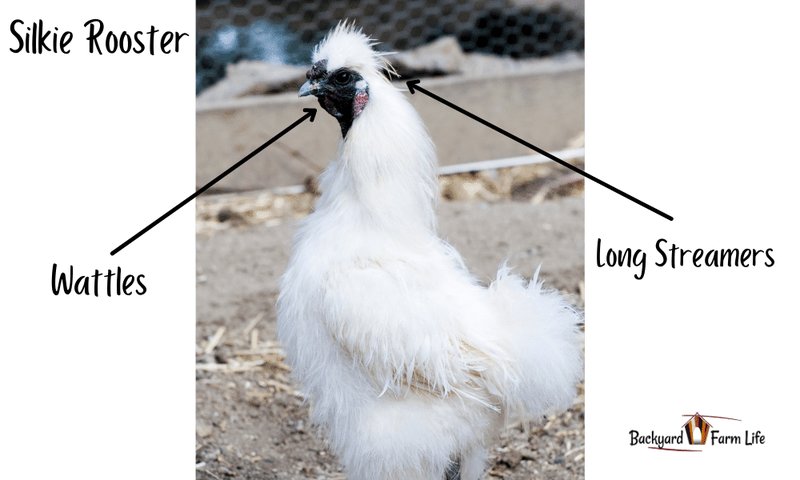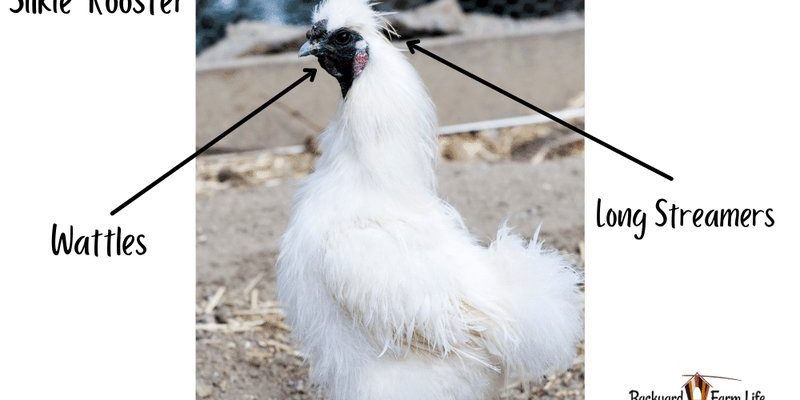
Recognizing the Silkie’s Unique Features
When you’re out in the wild looking for a Silkie, the first thing you’ll notice is its *distinctive appearance*. Unlike regular chickens, Silkies have an unusual feather texture that resembles soft fur. These feathers don’t have barbs like typical chicken feathers, giving them that unique, fluffy look that many adore.
Their small size adds to their charm. Adult Silkies generally weigh between 4-7 pounds, making them smaller than most breeds. You might find them standing on the ground, fluffing their feathers as they strut around, or pecking at the ground for insects and seeds. Their round bodies and short legs give them a cute, compact silhouette that’s hard to miss.
Another defining feature is their *blue-black skin*, which adds an exotic vibe. When you see a Silkie foraging in the grass or lounging under a tree, you might catch a glimpse of that unique coloration. Their skin tone is a hallmark of the breed, making them easier to identify among other poultry.
Observing Behavior and Habits
Silkies are known for their gentle nature, which often makes them quite friendly and approachable. They don’t typically exhibit aggressive behavior, setting them apart from other chicken breeds. If you come across a flock, you’ll likely notice that they’re not too concerned about your presence; they may just continue scratching the ground and looking for food.
You’ll often see them in small groups, as Silkies tend to be social animals. They enjoy the company of each other and don’t wander too far from their friends. This behavior can help you identify them in the wild, as other breeds might be more skittish or spread out.
Additionally, listen for their *softer clucks* and coos. Silkies have a quieter vocalization compared to regular chickens. If you hear gentle sounds coming from a patch of brush or tall grass, it could very well be a Silkie and its friends having a chat.
Distinguishing Colors and Varieties
Silkies come in several colors, which can make identifying them even more fun! While the most common color is white, you might also find Silkies in *black, blue, partridge, and splash* varieties. Each color brings its own charm, and sometimes they even have mixed colors, making them a unique sight.
If you see a white Silkie, it will usually have fluffy, snow-white feathers that catch the sunlight, creating a dazzling effect. A black Silkie, on the other hand, has dark, lustrous feathers that can strike a dramatic pose against green grasses.
It’s worth noting that their colors aren’t just for show; they can affect how they blend into their environment. For example, a white Silkie might stand out against a dark backdrop, while a black one might blend more easily. This can influence how often you spot them depending on the time of year and their surroundings.
Silkie Feet and Combs
A key characteristic of Silkies is their *distinctive foot structure*. Unlike most chickens that have standard feet, Silkies have five toes on each foot, which is unusual and makes them easy to identify. Their toes are often feathered, giving them a fluffy appearance that resembles the rest of their body.
When watching a Silkie walk, pay attention to how they navigate their surroundings. Their unique foot structure makes their movements somewhat clumsy but enchanting. You might see them glide through the grass, peering curiously at their surroundings.
Additionally, observe their combs. Silkies have a walnut-shaped comb that’s soft to the touch—very different from the typical serrated combs of other chicken breeds. The comb can be a bit difficult to spot initially, but it’s a telltale sign of a Silkie.
Identifying Silkies in Different Habitats
You might be wondering where exactly to find Silkies in the wild. While they are quite popular as backyard pets, you could stumble upon them in farms, small homesteads, or even free-range environments. They often roam in areas with tall grass and bushes, where they can forage for food and feel secure.
In more rural areas, Silkies might roam freely alongside other poultry. If you see them mingling with ducks or other chickens, keep an eye out for their fluffy appearance and friendly demeanor. They might be hard to miss once you know what to look for.
It’s important to remember that Silkies enjoy a safe space. They often seek shelter from predators, so look for them near shaded spots or places with dense foliage. They’re not typically found in open areas, as they prefer spots that provide a sense of security.
Why Identifying Silkies Matters
So, why is it important to identify a Silkie in the wild? For poultry enthusiasts, spotting these fluffy birds is about appreciation—understanding their unique qualities and behaviors. If you’re an aspiring chicken keeper, recognizing different breeds can help you choose the right one for your backyard.
Silkies are also fantastic pets. They have a calm temperament, making them great companions for families and children. Knowing how to identify a Silkie can encourage more people to appreciate these lovable creatures and even consider adopting them.
Plus, their unique feathers make them popular in exhibitions and fairs. Recognizing these birds might inspire you to learn more about poultry showmanship or get involved in local agricultural fairs.
Closing Thoughts on Spotting Silkies
Identifying a Silkie in the wild can be a delightful experience, especially once you know the signs to look for. From their fluffy feathers and gentle demeanor to their friendly behavior and unique colors, Silkies have a charm that’s hard to ignore.
Whether you’re a birdwatcher, a poultry lover, or just someone curious about our feathery friends, spotting a Silkie can add a little joy to your day. Next time you’re out exploring, keep an eye out for these lovely birds, and remember that their unique traits make them special in the world of poultry. Happy birdwatching!

